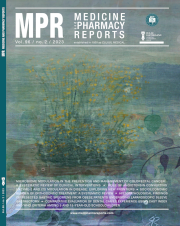Comparative evaluation of dental caries experience using CAST index and WHO criteria among 5 and 15-year-old schoolchildren
DOI:
https://doi.org/10.15386/mpr-2459Keywords:
CAST index, WHO criteria, dental caries, childrenAbstract
Background. CAST (Caries Assessment Spectrum and Treatment) index is a relatively new caries assessment tool that hierarchically describes the entire caries spectrum. Its comparability with WHO (World Health Organization) criteria in different populations and age groups needs to be investigated.
Objective. The objective of this study was to assess caries among 5 and 15-year-old schoolchildren using the CAST index and WHO criteria and to compare both indices on the basis of caries experience and examination time.
Methods. A cross-sectional study was conducted among 553 schoolchildren aged 5 and 15 years in the North zone of Bengaluru city, India. Examiners underwent training and calibration for performing the CAST index. The first examination was performed using the CAST index followed by a second examination using the WHO criteria 2013, after some days. Time taken for examination was also recorded.
Results. The study sample consisted of 279 five-year-old and 274 fifteen-year-old schoolchildren. The difference in caries experience among 5 and 15-year-old children assessed using the CAST index (52%, 45.6%) and WHO criteria (42.3%, 24.5%) were found to be statistically significant (p < 0.05). The average examination time was longer for the CAST index (93.77±24.77 seconds and 105.04±9.49 seconds) when compared to WHO criteria (61.05±15.91 seconds and 58.72±9.42 seconds) for primary and permanent dentition (p < 0.05).
Conclusion. Though the CAST index took a longer examination time, the information obtained was more precise and facilitated researchers in treatment planning encompassing prevention of initial lesions, restoration, and rehabilitation.
Downloads
Published
How to Cite
Issue
Section
License
The authors are required to transfer the copyright of the published paper to the journal. This is done by agreeing to sign the Copyright Assignment Form. Whenever the case, authors are also required to send permissions to reproduce material (such as illustrations) from the copyright holder.

The papers published in the journal are licensed under a Creative Commons Attribution-NonCommercial-NoDerivatives 4.0 International License.

